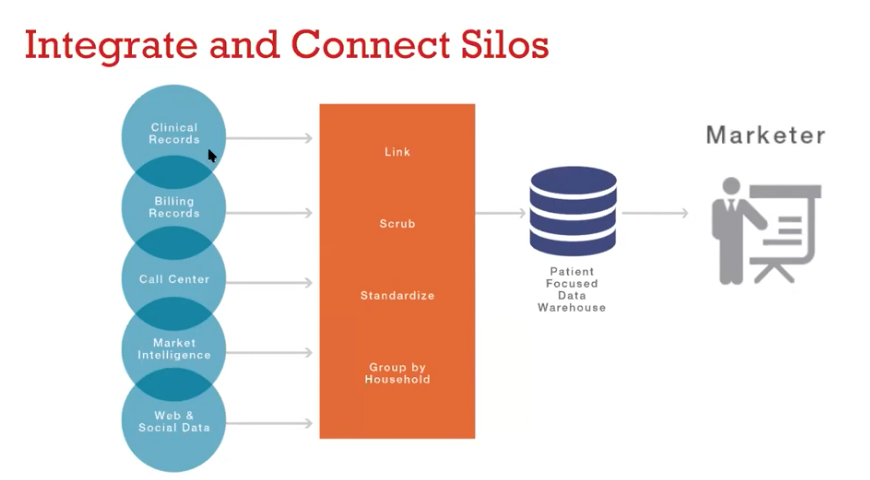A Quick Guide to Healthcare Marketing Analytics and Measuring Return on Marketing Spend in 2021
The challenges
In 2021, healthcare marketers are being asked more and more to prove their worth in bringing in patients and revenue. Claiming they’re delivering on “top of mind awareness” probably isn’t going to cut it in a COVID and Post-COVID world. However, due to the siloing of different departments (marketing, IT, admin, etc.), it can be hard to have a centralized hub detailing exactly how new patients came into the system.
Solution – CRM Integrated Marketing
While patient and service management software can do a good job organizing patients and managing resources, the marketing capabilities are minimal. By integrating your enterprise medical software with a CRM (Customer Relationship Management) or MAP (Marketing Automation Technology), you’re able to get much more data about your patients than from one on its own. Most importantly, this allows for clear lead source attribution so that advertising channel ROI analyses can be performed. An effective CRM strategy will help you use all the different types of data available to help you reach, track, motivate, and influence patient behavior.
For existing patients, marketing, IT, and administration/customer service should collaborate to identify when patients need what kind of care. Then marketing can push those messages out to the relevant people. For new patients, data should be gathered long before the patient ever walks through the door to know exactly what forces brought them there. Most CRM/MAPs can track anonymous data about the behavior of someone who visits your site, logging what pages they visit, how many times, etc. All of these activities can generate a lead score indicating how interested the potential patient may be. Then, once they take action by completing a form (ie, giving their name, email, and/or phone number), that higher lead score and behavioral data gets attached to the individual’s record. Workflows are then built to deliver content based on a certain score, certain page visits, or any other data captured.
This attribution info is what lets you know which of your advertising efforts (or combination of efforts) are successful at actually driving patients to book. This justifies campaign costs, reinforces media decisions, and helps to keep physicians and other staff members aligned to the campaign goals.
But remember, these systems are only as helpful as the people who run them. You need to have a dedicated team or agency partner to constantly iterate and improve upon the systems to get the best possible results.

Want more on this topic? Check out our recent webinar here. Or download our book, Under the Influence: The anthology of healthcare marketing best practices.
Interested in learning more about sales enablement and marketing automation? Check out this blog post from Overit.

